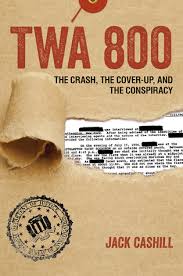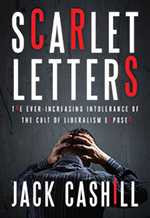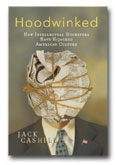Media Don’t Want to Know About Seth Rich
_____
Order Jack Cashill's latest book, TWA 800: The Crash, the Cover-Up, and the Conspiracy
______
Order Jack Cashill's book,
Scarlet Letters
___
Get your copy of Jack Cashill's book, "You Lie!"
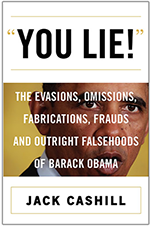
___
Get your copy of Deconstructing Obama
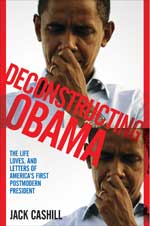
___
Jack Cashill's book:
Hoodwinked: How Intellectual Hucksters have Hijacked American Culture
© Jack Cashill
WND.com - May 24, 2017
Those who do not understand the major media might think that the murder of Seth Rich would be catnip for every aspiring Woodward or Bernstein in Washington.
The story is irresistible, right out of “House of Cards.” Rich, the 27-year-old director of voter expansion data for the DNC, was killed about 4:00 a.m. on July 10, 2016, 30 minutes or so after leaving a D.C. bar.
Although Metropolitan Police called it a “botched robbery,” Rich was shot twice in the back and neither his wallet nor his watch was taken.
Even if this happened at some time other than the heat of a presidential election, during which time rumors were flying about DNC data shared with Wikileaks, the story should have generated serious and competitive reporting. It has not.
There are precedents for this curious media indifference. The death of White House counsel Vince Foster in 1993 comes quickly to mind. So too does the death of Commerce Secretary Ron Brown during the presidential campaign of 1996.
Although I know no particular insight into the Rich and Foster cases, I know the Brown case better than any reporter in any newsroom in America. I wrote the only book on it, the aptly titled “Ron Brown’s Body.”
What I can say for sure about Brown’s death is that the major media had no more interest in getting to the bottom of it than did the White House.
In April 1996, Brown and 34 others were killed when the US Air Force plane that was carrying them crashed into a mountainside in Croatia.
In 2003, seven years after the crash, I secured a copy, all in paper, of the USAF’s 22-volume report on the crash. It was a gold mine of new information. I was told that I was the first person in the media to request it.
The New York Times had a reporter on that doomed plane. Its editors did not bother following up.
In 1996, as in 2016, a Clinton was engaged in a desperate quest to win a presidential election. To help the cause, the media routinely meshed the death of Brown, “this great American hero,” on April 3 with Martin Luther King’s death on April 4, twenty-eight years earlier.
President Clinton, in fact, unblushingly claimed Brown, like King, died “answering a very important challenge of his time,” and no one dared to call the comparison profane.
In fact, the deeply troubled Brown was staring at jail time for himself and his son Michael. The “very important challenge” was to seal a sweetheart deal between the neo-fascists who ran Croatia and the Enron Corporation. Oh yea, and to hoover up some campaign cash from the corporate flyers.
Remember Enron? George Bush’s friends. I learned about the Enron connection from the USAF report. In 2004, when the book came out, I scheduled a breakfast meeting with a prominent Washington Post journalist.
I was going to focus on Enron, then very much in the news. I told him as much. He cancelled at the last minute, no explanation, no rescheduling.
On Wednesday of this week, the Post ran a tut-tutting article headlined, “The life and death of the Seth Rich conspiracy theory.” How about an article on the life and death of Seth Rich? Or Ron Brown for that matter?
In December 1997, the conservative Pittsburgh Tribune Review posted a series of articles on the anomalies surrounding Brown’s death, most notably the apparent bullet hole in the top of his head.
The fact that three Armed Forces pathologists and a forensic photographer put their careers on the line to expose this buried nugget gave it added credibility.
True to form, the major media ignored this story, but like some rogue salmon it made an unusual jump from the conservative media stream to the black-oriented one.
Brown’s daughter Tracey learned about the hole in her father’s head only from the media and then more than a year and a half after the crash.
“Had my family known about the suspicious wound at the time,” said Tracey, “we would have requested an autopsy.” Inexplicably, Brown was buried without one.
The pressure from the black community grew more insistent. On December 18, 1997, the head of the NAACP, Kweisi Mfume, took the Brown case to the White House and demanded answers.
On Christmas Eve, activist comedian Dick Gregory wrapped the Armed Forces Institute of Pathology headquarters in yellow crime scene tape. The major media turned a blind eye.
Only after Jesse Jackson got on board in January did a reporter ask press secretary Mike McCurry about the Brown revelations.
McCurry did what the media are doing today, using the family of the deceased to shut down any inquiry.
“The Pentagon, I think, has very thoroughly and in very gruesome detail, and no doubt in ways painful to the Brown family, addressed this issue. And it’s time to knock this stuff off,” said Mike McCurry.
The media did as told. They knocked this stuff off. They asked no more questions about Ron Brown and attacked those who did.
The evidence strongly suggests Brown was murdered. Without an autopsy, however, the prudent observer can safely accuse Bill and Hillary Clinton of nothing more sinister than dreading the unknown.
For fear of what they might have found—in the most desperate political season of their lives—the Clintons chose not to look.
One would expect that of the Clintons, but then as now, the media have no excuse for doing the same.

Jack Cashill’s newest book, TWA 800: The Crash, the Cover up, the Conspiracy can now be ordered at Amazon.

